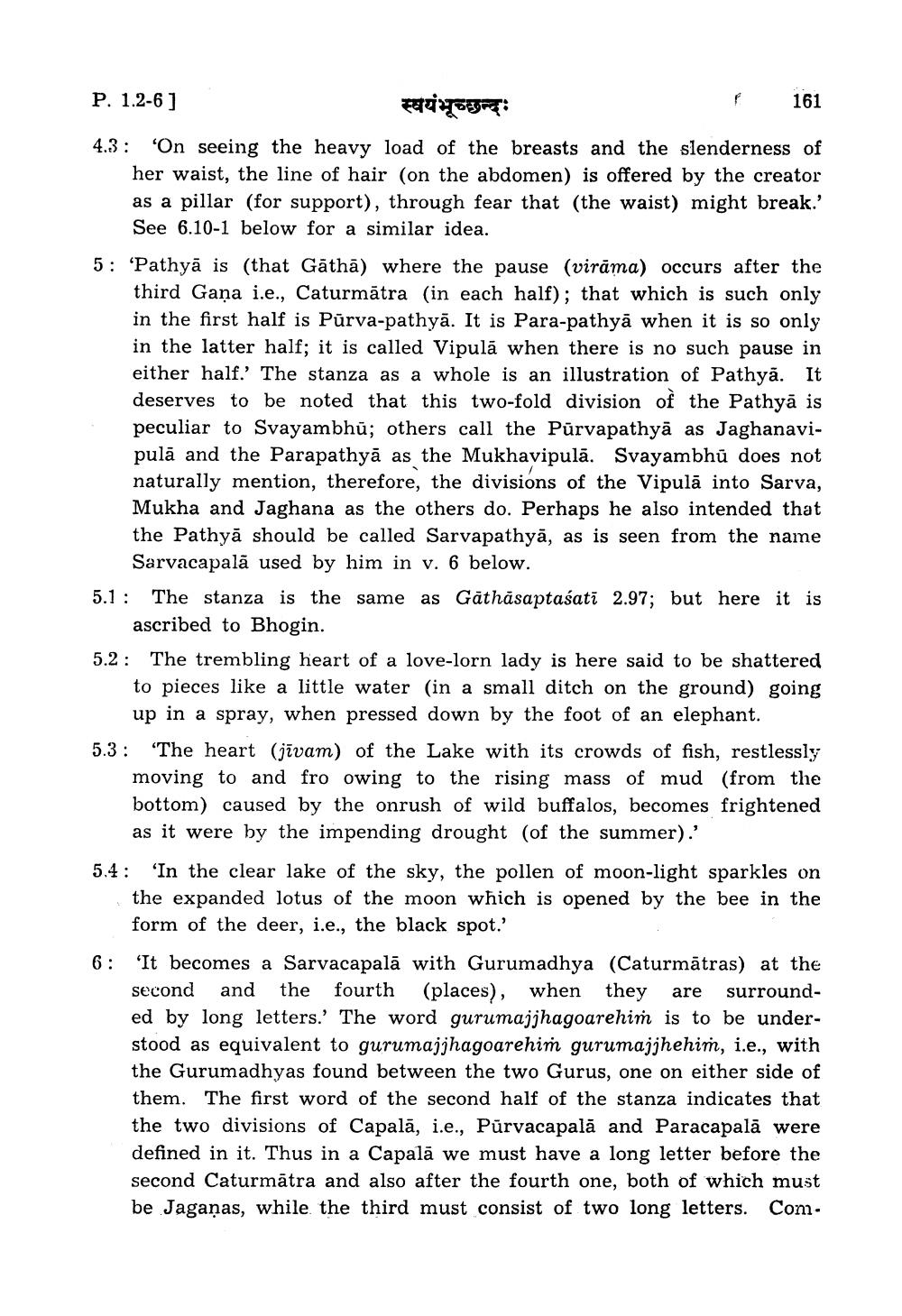________________
P. 1.2-6 ] स्वयंभूच्छन्दः
ľ 161 4.3: "On seeing the heavy load of the breasts and the slenderness of
her waist, the line of hair (on the abdomen) is offered by the creator as a pillar (for support), through fear that (the waist) might break.'
See 6.10-1 below for a similar idea. 5: 'Pathyā is (that Gāthā) where the pause (virāma) occurs after the
third Gana i.e., Caturmātra (in each half); that which is such only in the first half is Pūrva-pathyā. It is Para-pathyā when it is so only in the latter half; it is called Vipulā when there is no such pause in either half.' The stanza as a whole is an illustration of Pathya. It deserves to be noted that this two-fold division of the Pathyā is peculiar to Svayambhū; others call the Pūrvapathyā as Jaghanavipulā and the Parapathyā as the Mukhavipulā. Svayambhū does not naturally mention, therefore, the divisions of the Vipulā into Sarva, Mukha and Jaghana as the others do. Perhaps he also intended that the Pathyā should be called Sarvapathyā, as is seen from the name
Sarvacapalā used by him in v. 6 below. 5.1 : The stanza is the same as Gäthäsaptasati 2.97; but here it is
ascribed to Bhogin. 5.2: The trembling heart of a love-lorn lady is here said to be shattered
to pieces like a little water in a small ditch on the ground) going
up in a spray, when pressed down by the foot of an elephant. 5.3: "The heart (jīvam) of the Lake with its crowds of fish, restlessly
moving to and fro owing to the rising mass of mud (from the bottom) caused by the onrush of wild buffalos, becomes frightened
as it were by the impending drought (of the summer). 5.4: 'In the clear lake of the sky, the pollen of moon-light sparkles on
the expanded lotus of the moon which is opened by the bee in the
form of the deer, i.e., the black spot.' 6: 'It becomes a Sarvacapalā with Gurumadhya (Caturmātras) at the
second and the fourth (places), when they are surrounded by long letters. The word gurumajjhagoarehim is to be understood as equivalent to gurumajjhagoarehim gurumajjhehim, i.e., with the Gurumadhyas found between the two Gurus, one on either side of them. The first word of the second half of the stanza indicates that the two divisions of Capalā, i.e., Pūrvacapalā and Paracapalā were defined in it. Thus in a Capalā we must have a long letter before the second Caturmātra and also after the fourth one, both of which must be Jaganas, while the third must consist of two long letters. Com




